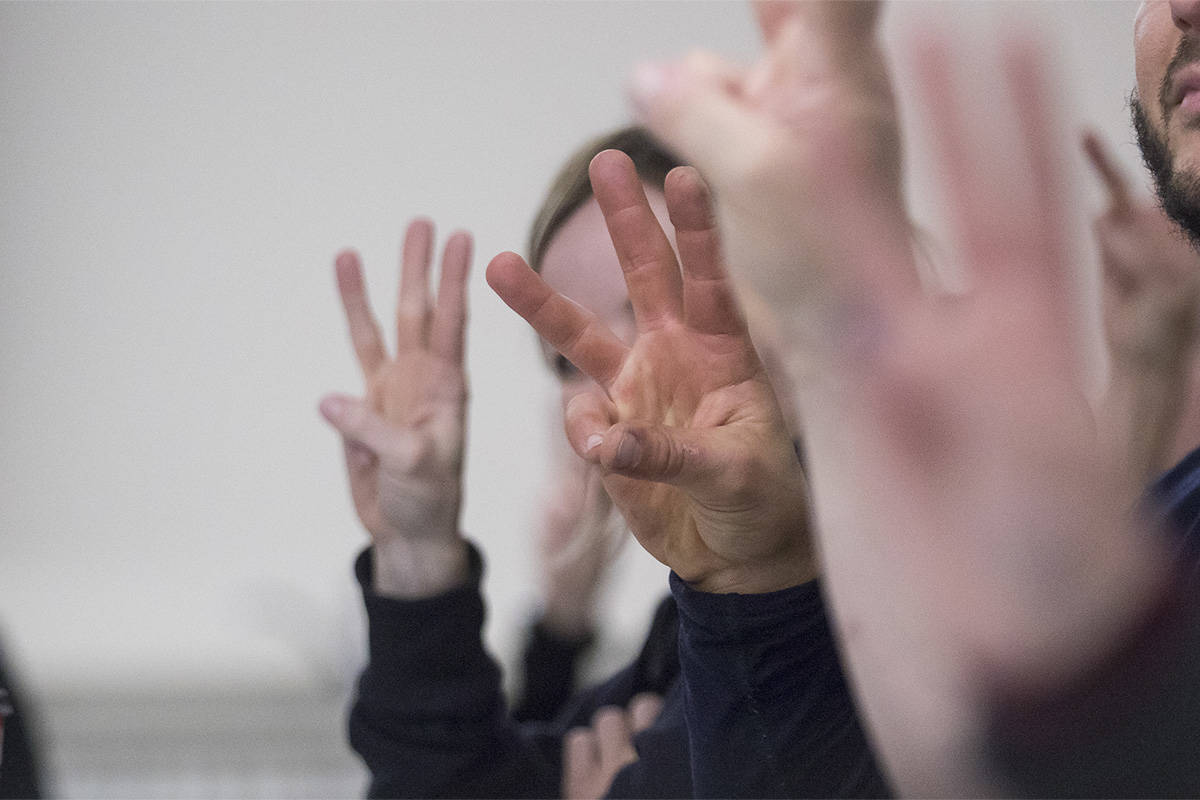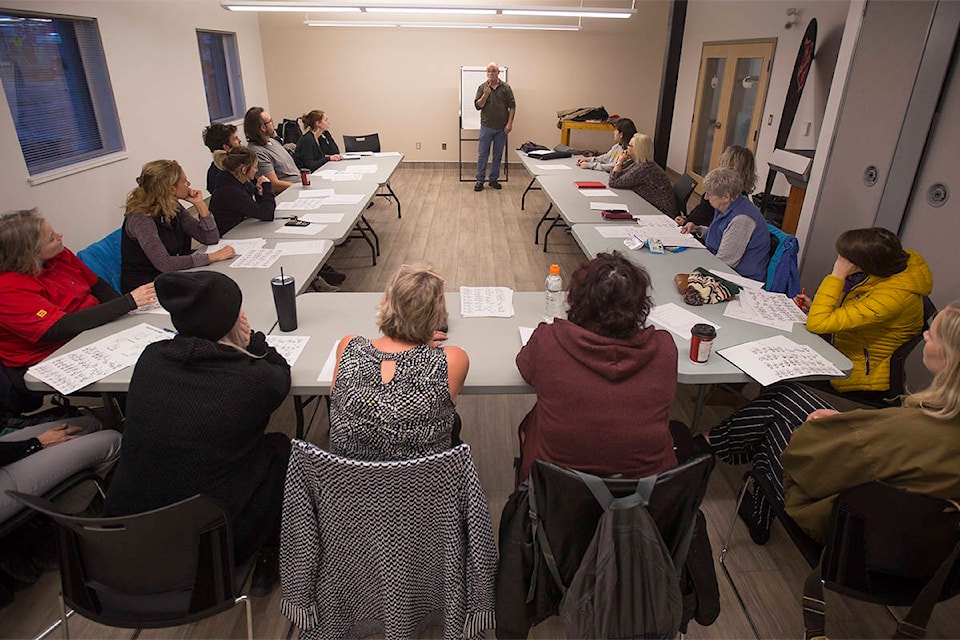When hearing people are parched from talking too much, they take a drink of water.
“When deaf people are,” Eric Johnson signed on Oct. 15, “they do this.”
He stuck his hand in a glass of water. The 13 students in his class laughed. It was the first night of Johnson’s level one course in American Sign Language.
For that initial class, Johnson had Amanda Smith, an accredited ASL interpreter for the Yukon government, in the room, but, Johnson said, she would only be there for the one night. The next nine classes would be just him and his students.
Francis Van Kessel, office manager at the Yukon Association for Community Living, said the YACL has been offering the classes for three years.
“Eric saw a need and said he would start offering it,” said Van Kessel. “There was a lot of demand and no one was teaching ASL. If you look at YG or the city of Whitehorse, the level of people that know sign language in the service industry, it’s very low.”
She said Johnson usually offers it through YACL in the spring and the fall, with a level one and a level two class each season. There are 10 classes, each one running 90 minutes, from 6:30 to 8 p.m.
People sign up for a number of reasons, she said. Some have been told by employers that they need to learn ASL. Some anticipate going deaf, so they learn before that happens. Parents sometimes sign up with children who are non-verbal, to learn a new way of communicating, she said.
Joan Wilson, one of Johnson’s students, said she and her daughter signed up for the class because her aunt, who was mostly deaf by 45, had taught classes.
As well, Wilson’s own mother had been hard of hearing her whole life until, at 85, she woke up one day and couldn’t hear anything.
Now in her 80s herself, Wilson is worried the same might happen to her, so she’s preparing.
“Plus,” said her daughter. “It’s another language. Everyone should learn another language.”
For those who didn’t yet have a base in ASL, Johnson started with the literal ABCs, walking participants through the signs for the letters of the alphabet. After that, he covered finger stretches, numbers and a few common words.
Just as there are regional differences in spoken dialect, he said, so too are there differences when you compare American sign language with Maritime Sign Language, Quebec Sign Language, or British Sign Language. BSL for example, uses two hands to sign each letter of the alphabet, while ASL uses one.
For words, he said, you often use two hands, with your dominant hand acting as the one that moves, and your non-dominant hand staying stationary.
Johnson also explained that much more than just your hands are used to communicate in sign language.
“You must use your eyes in this classroom,” he said. In terms of intonation, inflection and meaning, he said a lot can be read in facial expressions and body language.
He wrote the phrase “I want this” on a board and signed it in three different ways. Each time, the signs were the same, but the intensity in his hands and on his face were different, making it clear which word he was emphasizing.
The eyes can also come into play when similarly signed words are used, he said.
“Nice” is the same sign as the sign used for “clean.” If you’re right-handed, you would hold your left hand out, palm up, and move the palm of your right hand across the left, away from your body. It’s the expression on your face that tells the person you’re communicating with whether you’re saying “nice” or “clean.”
Sometimes the stakes are pretty low. Mixing up “nice” and “clean” or “meeting” and “to” aren’t as big a deal as some mistakes you could make.
Johnson joked that there’s a very slim margin for error when signing good morning, which involves bringing a vertical forearm with an open palm up under a horizontal forearm. It’s pretty close to the universally accepted gesture for “up yours,” where you bring up a vertical forearm with a closed fist.
That, of course, sparked a few conversations about what some students considered the most fun part of learning a new language — the swear words.
Anyone interested in finding out more about classes scheduled for spring can call the YACL at 667-4606. Information will be listed on the YACL’s Facebook page in the coming months.
Contact Amy Kenny at amy.kenny@yukon-news.com

